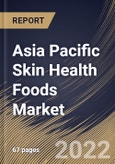Probiotics, which are bacteria, can also be helpful for skin that is prone to acne. Probiotic skincare fills the skin with all the good bacteria it requires, which can act as a barrier against the bad, acne-causing kind. Those who have battled acne brought on by bad bacteria may initially be wary of probiotics. By introducing the skin to the beneficial bacteria it requires to regulate and protect itself from external influences, probiotic skincare products can help.
This includes minimizing redness and inflammation because healthy skin that is populated with beneficial bacteria is more resistant to irritants. A healthy skin microbiome can also keep the skin in balance, lowering the risk of developing conditions like rosacea or eczema that affect the appearance and texture of the skin. An omega-3-rich diet may help to prevent or lessen the severity of acne. Recent research indicates that inflammation may be the primary cause of acne, and omega-3 fatty acids have been shown to reduce inflammation.
South Asia's largest market for natural skin care products has been India. In India, there aren't many makeup brands that can cater to the diverse needs of makeup artists and salons. The rapid economic development of India has increased competition within the beauty industry and attracted numerous foreign businesses, making it a significant market and a significant source of sales for skin health food products. The growing elderly population is fueling the demand for anti-aging products, which is driving the growth of the market.
The China market dominated the Asia Pacific Skin Health Foods Market by Country in 2021, and is expected to continue to be a dominant market till 2028; thereby, achieving a market value of $246.5 million by 2028. The Japan market is estimated to grow a CAGR of 7% during (2022 - 2028). Additionally, The India market is expected to experience a CAGR of 8.4% during (2022 - 2028).
Based on Indication, the market is segmented into Skin Conditions, Anti-Aging, and Anti-Allergy. Based on countries, the market is segmented into China, Japan, India, South Korea, Singapore, Malaysia, and Rest of Asia Pacific.
The market research report covers the analysis of key stake holders of the market. Key companies profiled in the report include BASF SE, Danone S.A. (Sofina Group), DuPont de Nemours, Inc., Nestle S.A., Cargill Corporation, Arla Foods, Inc., Glanbia PLC, Herbalife nutrition Ltd., Archer Daniels Midland Company, and Koninklijke DSM N.V.
Scope of the Study
Market Segments Covered in the Report:
By Indication- Skin Conditions
- Anti-Aging
- Anti-Allergy
- China
- Japan
- India
- South Korea
- Singapore
- Malaysia
- Rest of Asia Pacific
Key Market Players
List of Companies Profiled in the Report:
- BASF SE
- Danone S.A. (Sofina Group)
- DuPont de Nemours, Inc.
- Nestle S.A.
- Cargill Corporation
- Arla Foods, Inc.
- Glanbia PLC
- Herbalife nutrition Ltd.
- Archer Daniels Midland Company
- Koninklijke DSM N.V.
Unique Offerings from the Publisher
- Exhaustive coverage
- The highest number of Market tables and figures
- Subscription-based model available
- Guaranteed best price
- Assured post sales research support with 10% customization free
Table of Contents
Companies Mentioned
- BASF SE
- Danone S.A. (Sofina Group)
- DuPont de Nemours, Inc.
- Nestle S.A.
- Cargill Corporation
- Arla Foods, Inc.
- Glanbia PLC
- Herbalife nutrition Ltd.
- Archer Daniels Midland Company
- Koninklijke DSM N.V.








